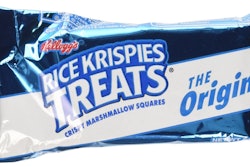(Editor's note: This article originally appeared in the March/April 2016 print issue of Food Manufacturing)
Food Manufacturing had the opportunity to correspond with Justin Moon of Acuity Brands about topics and trends as it relates to lighting in manufacturing facilities.
Q. What are some emerging trends when it comes to lighting in manufacturing facilities?
A. Manufacturing facilities are being asked to do more than ever before and that is trickling down into the equipment they use, including lighting. Right now, converting to LED is an easy decision. The payback is often less than two years and, with the right rebates, less than a year. We hear from a lot of manufacturing facility managers who have converted to LED and say, “Wow, that’s a huge difference in my costs and maintenance, but what we didn’t realize is how much better our employees can see to do their jobs and to keep things clean and safe.” Like insulation for your home, LED is just becoming standard for manufacturing facilities because it’s a huge waste of money not to.
One of the most exciting emerging trends we’re seeing take foot quite quickly in manufacturing facilities involves integrating lighting with building management systems for a single platform. These single systems can be controlled and monitored from anywhere in the world. Manufacturing facilities implement this single system approach to their building and control system because they’re seeing the savings they received from LED improve even more. But more importantly, they’re seeing huge operational efficiencies as a result, through real-time automation, better asset usage and complying with stricter codes in a smarter way. This integration is quickly becoming a competitive advantage for those early adopters and fast followers, which will only continue as technology evolves to make these systems even more secure and seamless.
Q. What are important considerations for food manufacturers when it comes to lighting at their facilities?
A. Food manufacturing has a lot of special requirements for lighting; it’s a lot like a heavy industrial steel mill in terms of lighting. What I mean by that is lighting in food manufacturing plants are subject to a lot of abuse — they have to withstand chemicals, steam, wash downs or food particulates while still doing their job of providing the right light at the right time. Otherwise, the light levels dull over time from the inside and when that happens, facility managers have to bring in a crane and the maintenance crew and stop production in order to clean or even replace these lights. That’s a lot of work and money. So, food manufacturers need to be sure their lights are designed to withstand these environmental factors.
Another important consideration for food manufacturers is providing enough light to make sure their product is the best it can be. Bright lights without glare help workers quickly perform quality control inspections, keep their floors clean and sanitary and deliver enough light levels to keep it safe for workers and machines. Of course, lots of lights can do that when they are new, but only advanced LED can maintain these bright light levels for years while keeping maintenance costs and hassle to a minimum. That way, employees can focus on what’s important — keeping the food processing lines running rather than maintaining or changing out the lights.
Q. In what ways can lighting solutions impact food and worker safety in food manufacturing facilities?
A. When you can see better you can do better — you can see that processing equipment better out of the corner of eye. You can see a truck around a corner better. You can see the difference between potentially contaminated products from the thousands that are not. And you can do this longer so fatigue becomes less of a problem when you have visually comfortable lights. We’ve even heard food manufacturing workers say they feel safer when their plant has switched to bright LEDs.
Q. How can the right lighting solutions impact energy efficiency in manufacturing facilities?
A. Switching from a traditional source to LED will save food manufacturing facilities upwards of 60 percent of their existing energy usage, right off the top. But when we talk to the building owners and facility managers, they’re asking us how we can do more. Because they’re business people. So we show them how adding automated sensors and networked controls can increase their energy efficiency even more. There are a lot of lighting solutions for a manufacturer looking to maximize or even improve their energy efficiency. It’s important to talk to knowledgeable people who will ensure implementing an entire plant strategy that doesn’t cost a lot to retrofit and will last as long as other assets in the plant.
Justin Moon is Director, Industrial Marketing with Acuity Brands, a North American market leader and one of the world's leading providers of lighting solutions for both indoor and outdoor applications. For more information about Acuity Brands industrial food processing solutions, visit www.acuitybrands.com/industrial-food























